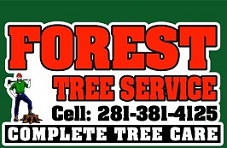
As tree owners, it’s important to maintain the health and safety of the trees on your property. However, there comes a time when you may need to determine if a tree is dead and requires removal. Identifying a dead tree early can prevent potential hazards and damage to your property. Here are some key signs to help you determine if your tree is dead and needs to be removed.
Check for Signs of Life
The first step in assessing whether your tree is dead is to check for signs of life. In the spring and summer, a healthy tree should have a full canopy of leaves. If your tree is bare while others are lush and green, this is a clear indicator that something might be wrong.
Bark and Trunk Health
The bark of a tree can tell you a lot about its health. Peeling, cracking, or missing bark can be a sign that the tree is dying. Additionally, if the tree’s trunk has large cracks or holes, it may indicate internal decay. You can also perform a simple test by scratching a small portion of the bark. If the underlying layer is brown and dry, the tree may be dead.
Branch Condition
Inspect the branches for any signs of brittleness. If branches snap off easily and have no green tissue inside, this could be an indication that the tree is dead. A significant amount of dead or falling branches is a strong indicator of a dying tree.
Fungal Growth
The presence of fungi, such as mushrooms, at the base of the tree or on the trunk is a sign of internal decay. Fungal growth often indicates that the tree’s structural integrity is compromised, making it more likely to fall.
Leaf and Bud Health
During the growing season, leaves should be vibrant and healthy. If you notice discolored, wilted, or absent leaves, it could be a sign that your tree is struggling. Similarly, if buds fail to open during the growing season, the tree might be dead.
Root Problems
Examine the roots for signs of decay or damage. If the roots are decaying or the ground around the tree is heaving, it can indicate root rot or other issues. Trees with compromised root systems are more likely to fall, posing a safety risk.
Unusual Leaning
While some trees naturally lean, a sudden or severe lean can be a sign that the tree is dying or has root damage. This is especially concerning if the lean is accompanied by cracks or heaving soil around the base.
Pest Infestation
Pests can be both a sign and a cause of a dying tree. If you notice an unusual number of insects or signs of infestation, such as boreholes or sawdust, the tree may be in decline.
When to Call a Professional
If you observe any of these signs and are unsure about the health of your tree, it’s best to consult with a professional tree service. At Forest Tree Service LLC, our experienced arborists can assess the condition of your tree and determine the best course of action. We prioritize safety and customer satisfaction, providing reliable and expert advice.
Why Remove a Dead Tree?
Removing a dead tree is crucial for several reasons:
- Safety: Dead trees are more likely to fall, posing a risk to people, property, and power lines.
- Pest Prevention: Dead trees can attract pests such as termites, which can then spread to healthy trees or even your home.
- Aesthetics: Dead trees can be an eyesore, detracting from the beauty of your landscape.
- Space for New Growth: Removing a dead tree allows space for new, healthy trees to grow.
Determining whether a tree is dead can be challenging, but by looking for these signs, you can make an informed decision. If you’re ever in doubt, Forest Tree Service LLC is here to help. Contact us today at 281-381-4125 for a free assessment and let us help you maintain a beautiful and safe environment.
